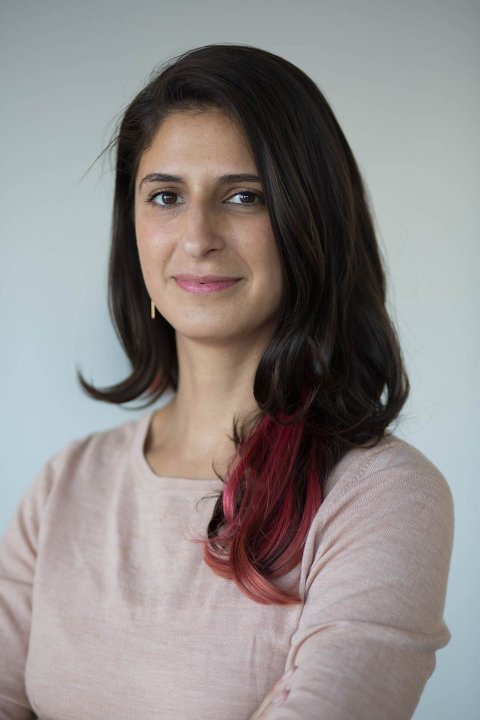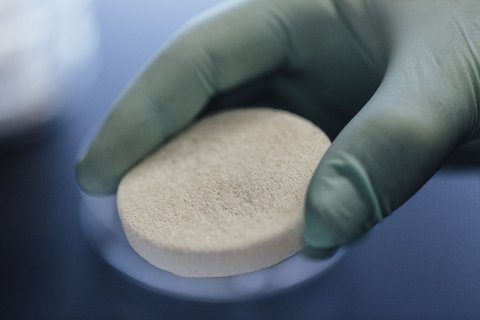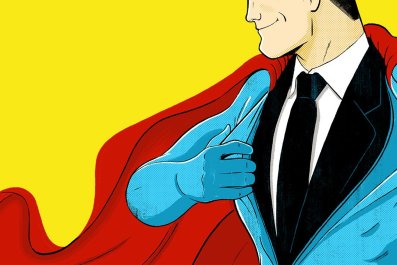As the CEO and co-founder of EpiBone, Nina Tandon is using stem cells and 3D printing to create living skeletal implants for those who need them. She wants to bypass the use of foreign materials, like metal and plastic, and harness the power of a patient's own body to create implants. EpiBone's technology creates a "puzzle piece" for patients, infusing their own stem cells into it before incubating it in a bioreactor that mimics conditions inside the body. The piece emerges as bone and cartilage ready for implantation.

What is your moonshot?
By the time we go through this lifetime, 75 percent of us are going to be living with parts of our bodies that we weren't born with—dental implants, cardiac stents, pacemakers. About 800,000 people per year in the U.S. alone have to have a joint replaced. And this wouldn't be a problem, except that these joints are made out of materials that aren't available in our bodies. What this means is that over time these implants fail. So we said: Look, why don't we take the cells that we were born with, the cells that created our bodies in the first place, and repair our bodies every day? Why can't these replacement body parts be made out of our own cells?
What sets EpiBone apart?
What we're doing that's really different than others is that we're actually able to combine 3D printing with living cells. And we're doing that in a way that generates functional tissues at the end that are ready for implantation. We've found that the better we can copy the natural environment, the better those stem cells can reproduce that tissue in the lab.
How do you make this accessible to all of the people who need it? Is it meant to be cheaper than traditional replacement surgeries?
A lot of people ask, If we can't afford nonpersonalized medicine, how can we afford personalized medicine? Right now, when an implant fails, we just go back and repeat the surgery. But when we take a personalized approach, we can actually circumvent these limitations. Just because it's personalized doesn't mean it's necessarily more expensive to the overall health system at large. When we think about affordability, we think: What are the surgeries that we are going to prevent down the line because we've prevented the need for those secondary surgeries?
What inspired this idea?
I have two color-blind sisters, and my brother has a condition called retinitis pigmentosa, which means that the receptors for night vision in his eyes have very low sensitivity and that over time he's losing his vision. From a very early age, I realized biology is miraculous. The fact that we have eyes at all and we can see it all is amazing. But on the other hand, like any other technology, it's somewhat fallible. Because a single mutation in our DNA can mean that our entire experience of the world is really different. So I knew that I wanted to be involved in the intersection between the kind of technology we build with our hands and the kind of technology that's resident in our own bodies.
How close are you to success?
For me, success really means that we are impacting patient lives. That because of our technology, people are living happier, healthier and less painful lives. The next step for us is completion of human clinical trials. I'm really excited about the idea that if you've damaged your cartilage because of wear and tear, we don't need to think about bodies the way we think about a car, just replacing ourselves with metal and plastic.
What will those human trials entail?
We're actually regulated like a cell therapy. For us, cells are the active ingredient. Our first trials will be safety. After we prove that, we'll be able to test more subjects and be able to show that our product works.
How do you see the world ahead if you are successful?
If I think forward 20 years, to the world I want to see, it's a world in which we treat our bodies more like ecosystems, where we keep ourselves healthy over our lifetime; as we need to repair, our bodies become like a renewable resource of cells that repair us over time. We have that capacity within ourselves already. Occasionally, our bodies are overwhelmed by the tasks at hand, but I don't think we're far away from a future in which we can truly unlock the regenerative capacities of our own bodies.

In anticipation of the 50th anniversary of NASA astronauts landing on the moon, Newsweek is spotlighting pioneers in science and technology, highlighting their very own moonshots and how they hope to change the world.











